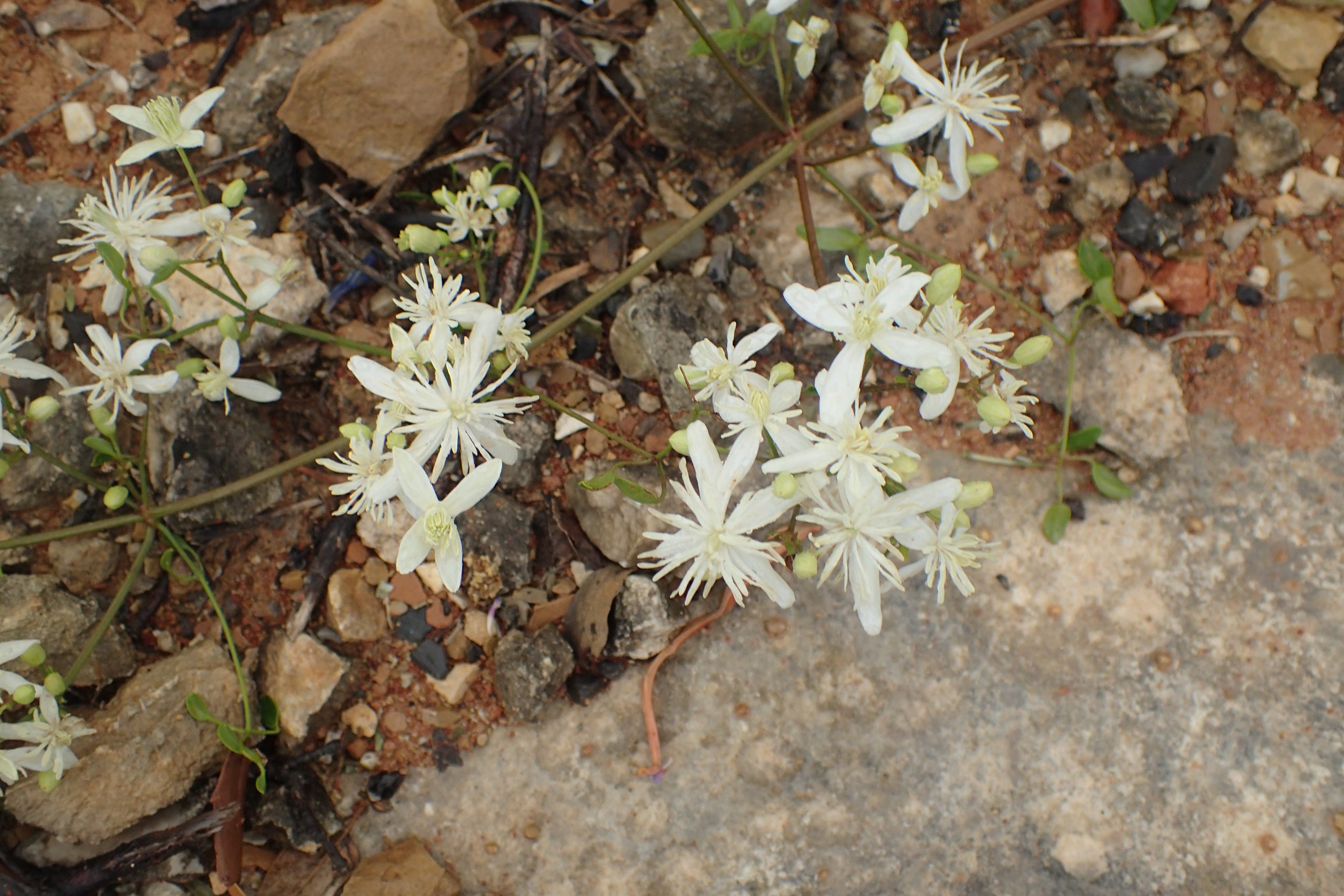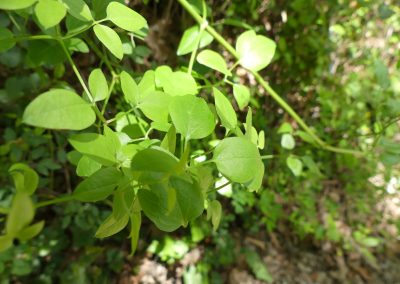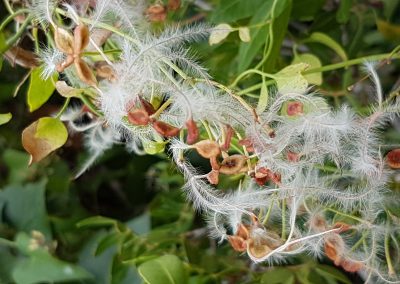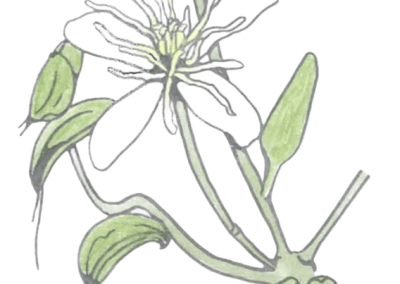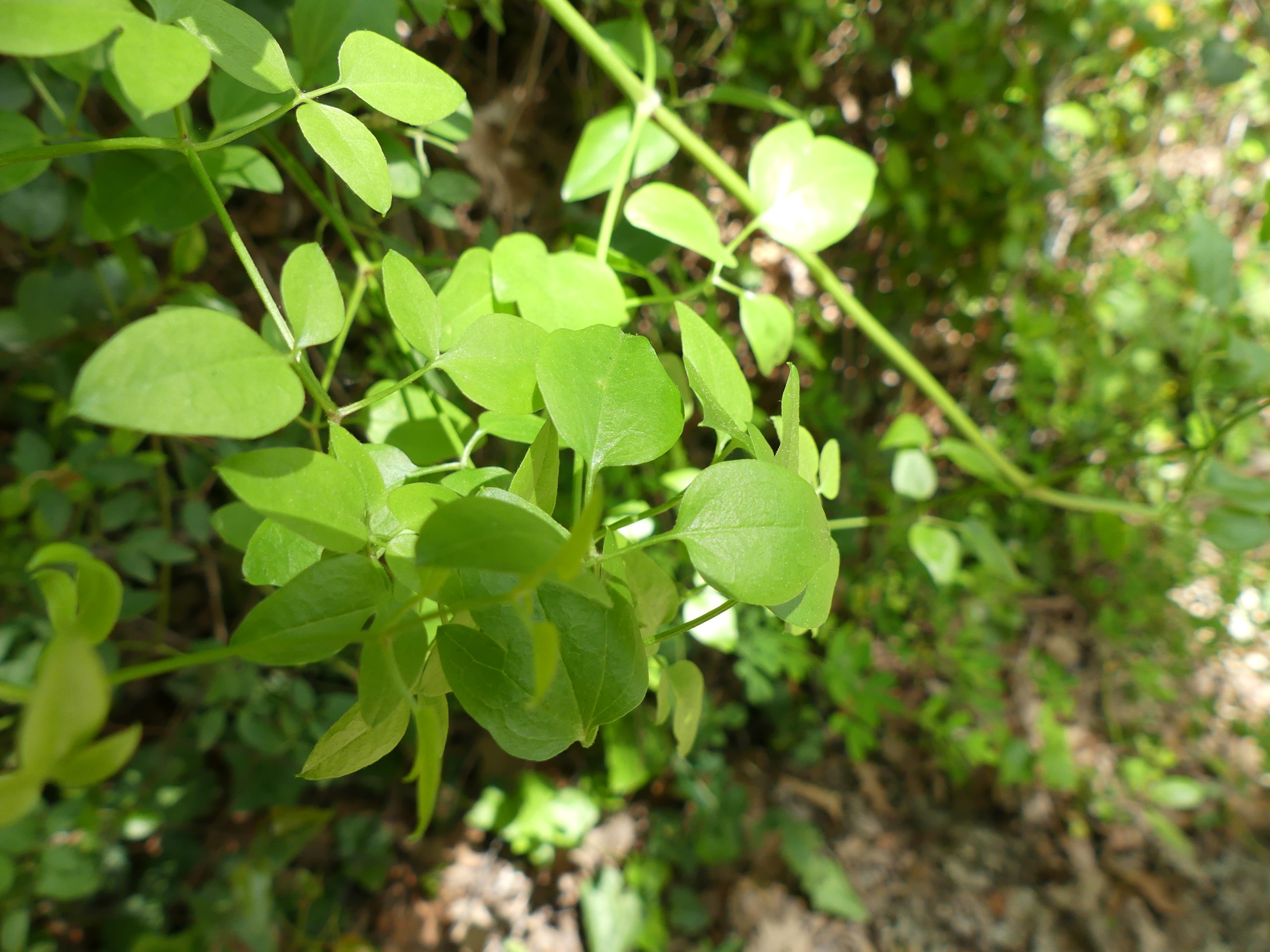Clematis flamulla
Scientific description
Taxon: Clematis flammula
Class: Dicotyledons (Magnoliopsida)
Subclass: Ranunculids
Order: Ranunculales
Family: Ranunculaceae
Common name: Fragrant virgin’s bower / Sweet-scented clematis
Origin:
Southern Europe and Mediterranean region.
Description:
Clematis flammula is a woody deciduous vine reaching 3–5 m. Leaves are compound, alternate, with 3–7 elongated leaflets, bright green. Produces small, highly fragrant white star-shaped flowers in clusters, blooming in summer. Prefers sunny, well-drained sites, along hedges, scrublands, open areas. Robust plant, climbs using twining stems.
Propagation:
By seeds, layering, and herbaceous or semi-woody cuttings. Rapid germination under favorable conditions.
Ecology:
Found in Mediterranean scrublands, forest edges, and hedges. Tolerant to drought and calcareous soils. Supports biodiversity by providing shelter and nectar for insects.
Uses:
Ornamental for fragrance and flowering. Used in hedges or trellises for decoration and biodiversity.
Threats:
No major known threats. Robust, sometimes invasive outside native range.
Taxon : Clematis flammula
Classe : Dicotylédones (Magnoliopsidées)
Sous-classe : Ranunculidées
Ordre : Ranunculales
Famille : Renonculacées
Nom commun : Clématite à grappes / Clématite odorante
Origine :
Europe méridionale et région méditerranéenne.
Description :
Clematis flammula est une liane ligneuse à feuillage caduc, 3–5 m. Feuilles composées, alternes, avec 3–7 folioles allongées, vert vif. Fleurs blanches étoilées très parfumées, en grappes, floraison estivale. Milieux ensoleillés et bien drainés, haies, broussailles, zones ouvertes. Plante robuste, grimpe grâce aux tiges volubiles.
Propagation :
Par graines, marcottage et bouturage herbacé ou semi-ligneux. Germination rapide en conditions favorables.
Écologie :
Présente dans broussailles méditerranéennes, lisières forestières et haies. Tolérante à la sécheresse et au calcaire. Favorise la biodiversité, refuge et nectar pour les insectes.
Utilisation :
Ornementale pour son parfum et floraison. Utilisée en haies ou treillages pour décoration et biodiversité.
Menace :
Pas de menace majeure connue. Plante robuste, parfois envahissante hors de son aire d’origine.
Taxon: Clematis flammula
Clasă: Dicotiledonate (Magnoliopsida)
Subclasă: Ranunculide
Ordin: Ranunculales
Familie: Ranunculaceae
Denumire populară: Clematita cu ciorchini / Clematită parfumată
Origine:
Europa de sud și regiunea mediteraneană.
Descriere:
Clematis flammula este o viță lemnoasă cu frunze căzătoare, 3–5 m. Frunze compuse, alterne, cu 3–7 folioli alungiți, verde aprins. Flori albe, stelate, foarte parfumate, grupate în ciorchini, înflorește vara. Preferă locuri însorite și bine drenate, de-a lungul gardurilor vii, tufișuri și zone deschise. Plantă robustă, se cățăra cu tulpinile răsucite.
Înmulțire:
Prin semințe, butași erbacei sau semi-lemnoși și marcotaj. Germinare rapidă în condiții favorabile.
Ecologie:
În tufișuri mediteraneene, marginile pădurilor și garduri vii. Tolerantă la secetă și soluri calcaroase. Favorizează biodiversitatea, adăpost și nectar pentru insecte.
Utilizare:
Ornamentală pentru parfum și înflorire. Folosită în garduri vii sau pe spalieri pentru decor și biodiversitate.
Amenințări:
Nu există amenințări majore cunoscute. Plantă robustă, uneori invazivă în afara arealului său natural.
Ταξινόμηση: Clematis flammula
Κλάση: Δικοτυλήδονα (Magnoliopsida)
Υποκλάση: Ρανονκουλίδες
Τάξη: Ranunculales
Οικογένεια: Ρανουκουλάκια
Κοινό όνομα: Κληματίδα με ταξιανθίες / Αρωματική κληματίδα
Προέλευση:
Νότια Ευρώπη και μεσογειακή περιοχή.
Περιγραφή:
Ξυλώδης, φυλλοβόλος αναρριχητική, 3–5 μ. Φύλλα σύνθετα, εναλλασσόμενα, 3–7 επιμήκη φυλλάρια, ζωηρό πράσινο. Μικρά, πολύ αρωματικά, λευκά αστέρι-σχήματος άνθη σε ταξιανθίες, ανθοφορία καλοκαίρι. Προτιμά ηλιόλουστα, καλά στραγγιζόμενα μέρη, κατά μήκος φρακτών, θάμνους, ανοιχτές περιοχές. Ανθεκτικό φυτό, σκαρφαλώνει με ελικοειδή στελέχη.
Διάδοση:
Με σπόρους, καταβολάδες, ποώδη ή ημιξυλώδη μοσχεύματα. Γρήγορη βλάστηση σε ευνοϊκές συνθήκες.
Οικολογία:
Μεσογειακοί θάμνοι, άκρες δασών, φράχτες. Ανθεκτική σε ξηρασία και ασβεστώδη εδάφη. Παρέχει καταφύγιο και νέκταρ για έντομα.
Χρήσεις:
Καλλωπιστικό για άρωμα και άνθιση. Χρησιμοποιείται σε φράχτες ή πέργκολες για διακόσμηση και βιοποικιλότητα.
Απειλές:
Δεν υπάρχουν σοβαρές γνωστές απειλές. Ανθεκτικό, μερικές φορές επεμβατικό εκτός φυσικής περιοχής.
Creative writing inspired by Clematis flamulla
A flaming clematis for an ordinary life
Once upon a time, there was a princess who couldn't leave her castle for fear of being recognized and forbidden by her parents. Her name was Lyne. She loved to contemplate the city she'd never set foot in, with eyes full of both envy and melancholy. Fortunately, Lyne had a friend, Mélina, who lived in the city. The two girls had met as children, and since then they'd met every weekend at the back of the castle to avoid being caught out. During these short reunions, the two girls would chat about the city. Mélina told them what ordinary life was like, and as it was Lyne's dream to go there without being recognized, Mélina promised to find a solution.
For some time now, Mélina had been looking for a way to get Lyne out of her castle without being recognized, but to no avail, until one day she met a really ugly man she'd never seen before.
So she decided to follow him discreetly to learn a little more about him. As time went by, she found him changing, even charming. On the contrary, he was quite handsome. She caught him rubbing his face with something, and after that, he was soon ugly again, which whetted her curiosity. The next day, she was determined to go and have a chat with him, but he didn't feel like making conversation with her. The only information she managed to glean from this short conversation was the stranger's first name, Ayden. Melina kept at it and continued to search for his secret until she finally discovered it.
That day, she followed Ayden to a field where he went to pick some pretty flowers. She waited for him to leave before picking some of her own. As she tried to smell the plant, she began to feel a tingling sensation on her skin. Looking at herself in the mirror, she immediately realized that it was the famous flaming Clematis that was making Ayden so ugly. She sat there in the field looking at herself in the mirror until she found her beautiful face again.
Cautiously, Mélina took a flower from the plant and presented it to Lyne. Lyne was delighted, didn't care about the risks and wanted to try it right away, but when she rubbed her face with it, she didn't feel any tingling or discomfort. However, she had become really ugly and almost didn't recognize herself in the mirror, which made her jump for joy. So she went out on the town with her best friend Mélina, and finally made her dream come true thanks to a simple flower: the flaming clematis.


